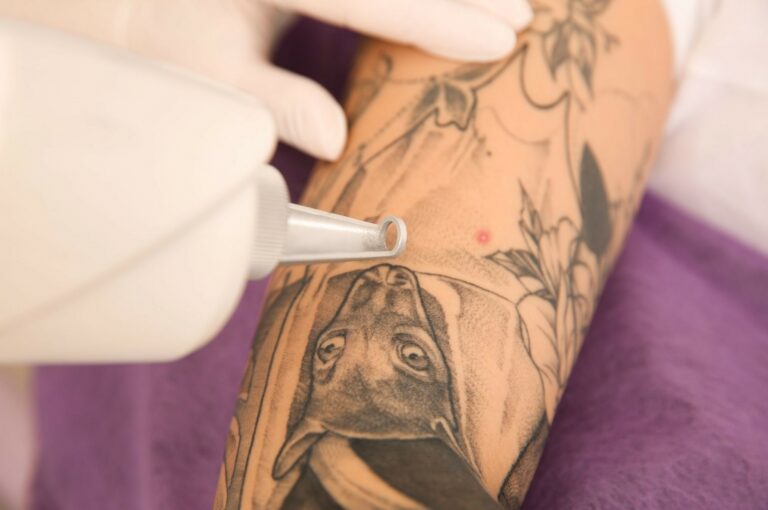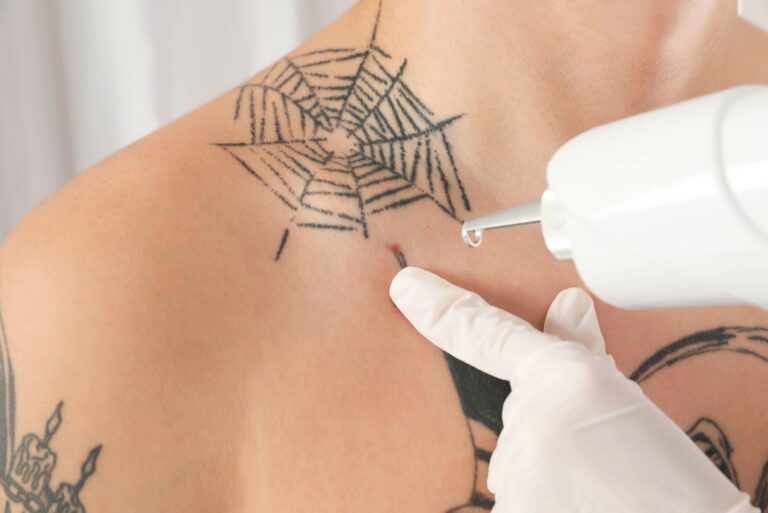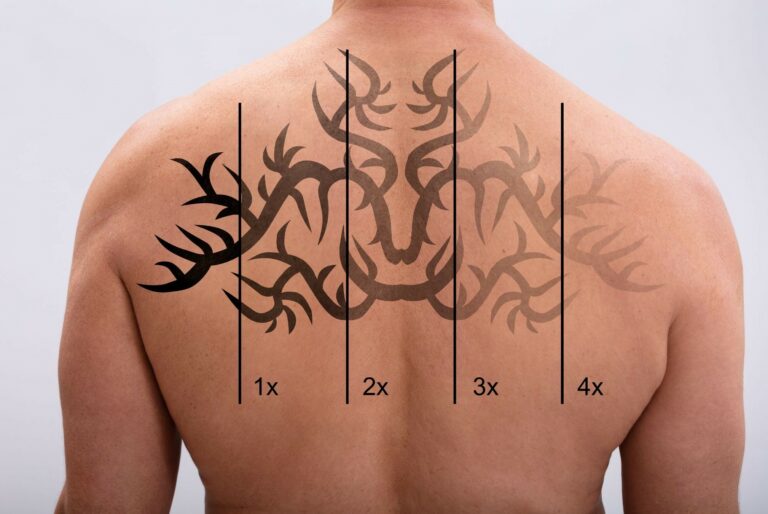Erasing Ink: Exploring the World of Non-Invasive Tattoo Removal Techniques
Introduction
Tattoos have been a popular form of self-expression for thousands of years. However, the decision to get a tattoo is not always permanent. People may change their minds about the design or location of their tattoo, or simply outgrow it over time.
Traditional tattoo removal techniques such as surgical excision, dermabrasion, and salabrasion can be painful, invasive and often result in scarring. In recent years, non-invasive tattoo removal techniques have emerged as a less painful and more effective way to remove unwanted tattoos.
Explanation of What Non-Invasive Tattoo Removal Is and How It Differs from Traditional Methods
Non-invasive tattoo removal methods involve using specialized equipment and products to break down the ink particles within the skin without causing damage to surrounding tissues. Unlike traditional methods that require incisions or abrasions on the skin, non-invasive options such as laser removal use light energy to break up ink pigments into tiny fragments that are then absorbed by the body’s immune system.
One of the main benefits of non-invasive tattoo removal is its ability to treat a wider range of skin types without significant pain or downtime. Traditional methods may cause significant discomfort for those with sensitive skin or darker complexions due to an increased risk of scarring or hyperpigmentation.
The Brief History of Tattoo Removal Techniques
The history behind removing tattoos dates back centuries ago when ancient tribes used various abrasive materials like shells, sandpaper-like materials like pumice stone mixed with wine vinegar, and even animal fat for making creams that would remove tattoos. The first modern method for removing tattoos was mechanical ablation which involved scraping off the top layers of skin containing tattoo pigment using abrasive tools like saltwater baths applied with needles in a circular motion until only faint traces remained visible on one’s body. In 1980 Dr.Rox Anderson developed laser for tattoo removal which is the most commonly used method today.
Why Non-Invasive Tattoo Removal Is Preferred
As mentioned earlier, non-invasive tattoo removal techniques are preferred over traditional methods due to their effectiveness, minimal pain, and low risk of scarring or hyperpigmentation. Additionally, they can be used to remove tattoos from virtually any part of the body with relatively little recovery time required.
The advancements in technology have made non-invasive tattoo removal a safe and effective option for those who wish to have their tattoos removed. With each passing year, new techniques are being developed that make the process more efficient and less painful for individuals looking to rid themselves of unwanted tattoos.
Laser Removal
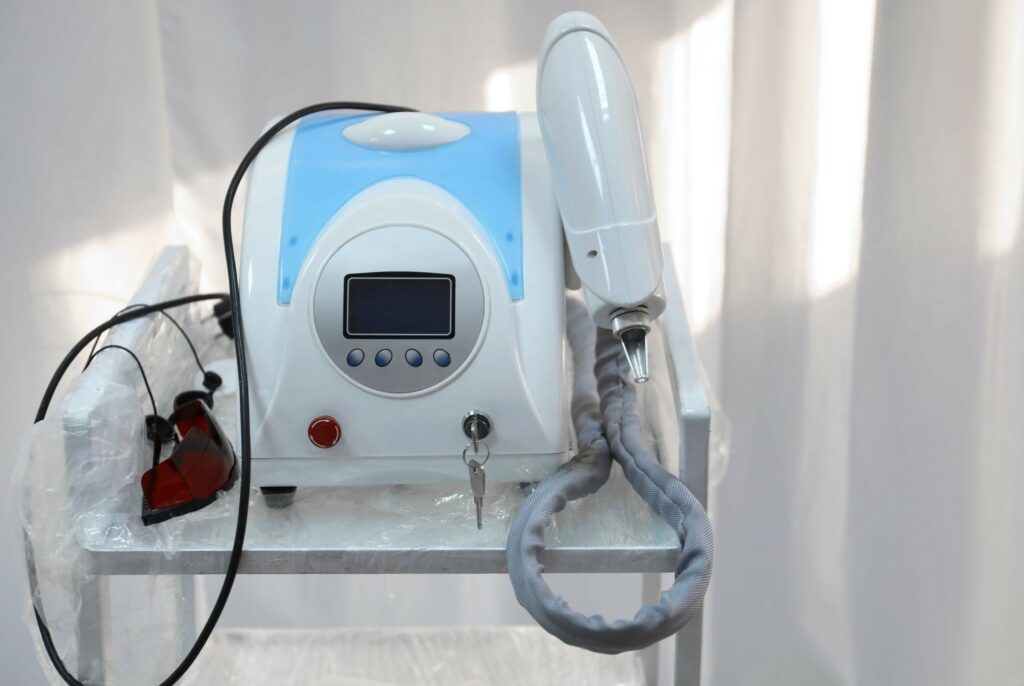
Breaking down ink particles with lasers
Laser tattoo removal is a non-invasive technique that uses high-intensity laser beams to break down the ink particles in the skin. The lasers emit short pulses of light that target the pigments in the tattoo, causing them to fragment into tiny particles. The body’s immune system then naturally flushes out these small particles over time, resulting in a gradual fading of the tattoo.
Different types of lasers used for tattoo removal
There are several types of lasers used for tattoo removal, including Q-switched ruby, ND: YAG, and alexandrite. Each type of laser has specific wavelengths that target different colors of ink. For example, Q-switched ruby lasers are most effective at removing blue and green tattoos while ND: YAG lasers work best on black and dark-colored tattoos.
Pros and cons of laser removal
One advantage of laser removal is its high level of precision. Lasers can selectively target only the pigmented areas on the skin without damaging surrounding tissue.
Additionally, this method requires no incisions or needles to remove tattoos safely. However, there are also some disadvantages to consider when it comes to laser removal.
One major issue is pain – the procedure can often be quite uncomfortable even with topical anesthetics applied beforehand. Additionally, laser treatment may not always result in complete tattoo removal or may require several sessions depending on various factors like size and color.
Chemical Peel Removal
How chemical peels work on tattoos
Chemical peel treatments use chemicals like trichloroacetic acid (TCA), glycolic acid, or alpha hydroxy acids (AHA) solutions to remove layers of skin containing pigment. During a chemical peel treatment, a solution is applied directly to the skin, creating a controlled chemical burn that leads to the removal of the top layers of the skin, along with tattoo pigment.
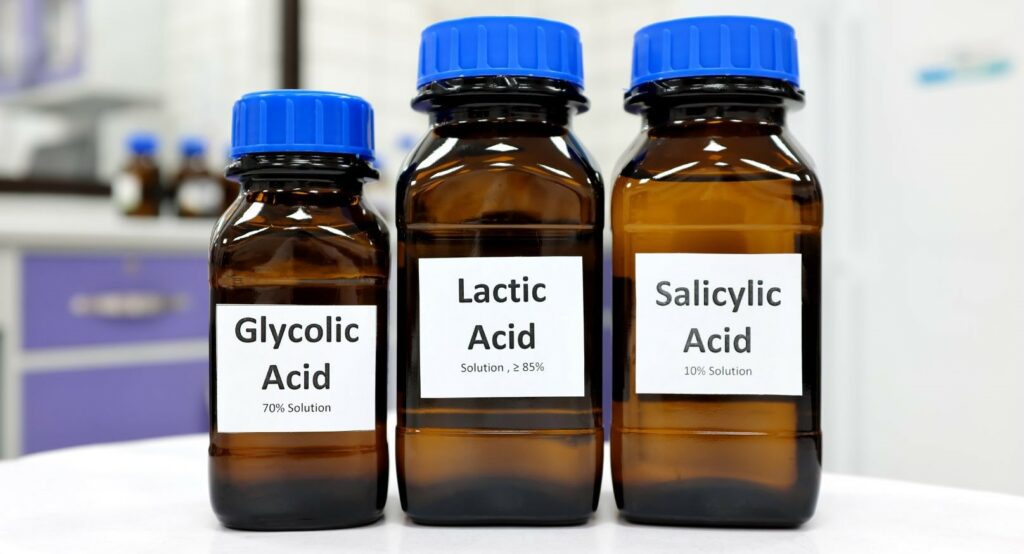
Types of chemical peels used for tattoo removal
Different types of chemical peels may be used depending on the depth and coloration of the tattoo. Superficial peels are mild and only remove the outermost layers of skin, while medium-depth peels penetrate deeper into the skin to reach pigments embedded in deeper layers.
While chemical peels are categorized as non-invasive techniques for tattoo removal, it is important to acknowledge that they do involve a certain degree of invasiveness due to the application of acidic compounds onto the skin’s surface layers.
Pros and cons of chemical peel removal
A significant advantage of chemical peel treatments is that they can often successfully remove almost all colors from tattoos without leaving scars. The process also does not require anesthesia or needles. However, there are also some disadvantages to consider when it comes to this type of treatment.
Chemical peels may cause temporary redness or scabbing, and they require adequate after-care during healing time. Additionally, patients with darker complexions may experience discoloration or hyper-pigmentation as a result.
Microdermabrasion Removal
How microdermabrasion removes tattoos
Microdermabrasion involves using tiny crystals or diamonds to exfoliate off dead surface skin cells gently. In tattoo removal procedures using microdermabrasion techniques, a handheld device is used in combination with abrasive materials like diamond tip wands or crystals to scrub away layers of dead skin containing pigment particles.
Types of microdermabrasion used for tattoo removal
Two main types are commonly employed – crystal-based microdermabrasion and diamond-tip microdermabrasion. Diamond-tip machines use diamond-tipped wands instead of aluminum oxide crystals that are vacuumed up along with treated tissue remnants with crystal-based methods.
Pros and cons of microdermabrasion removal
Microneedling is a highly effective and safe method for tattoo removal. It is non-invasive, and the results are usually visible after just one session. Additionally, microdermabrasion techniques also work well on all body areas, including sensitive areas.
However, the process can be uncomfortable during treatment sessions as it involves some abrasion of the skin’s top layer. It may also require several treatments to achieve complete tattoo removal and may not be adequate for larger tattoos or those with significant ink spread.
Saline Solution Removal
How saline solution removes tattoos
A saline solution is a water-based solution that uses salt to break down pigments in tattoo ink. The treatment involves injecting a sterile saline solution into the skin, which helps break apart ink particles by drawing them out of the skin.
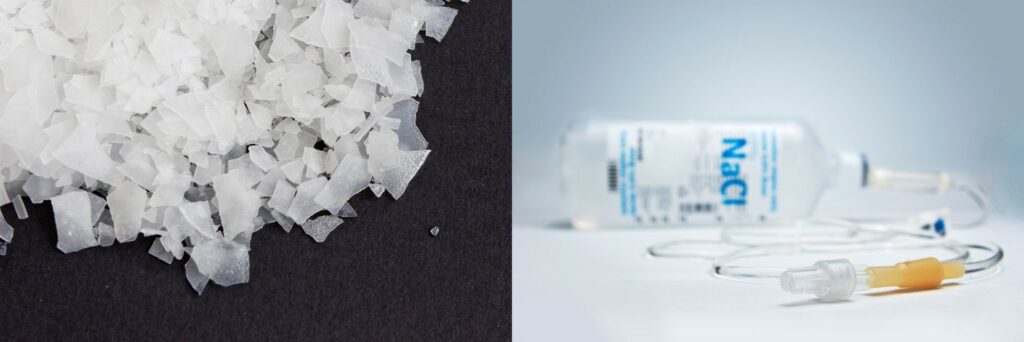
The procedure involved in the saline solution method
This process mimics how tattoos fade over time when exposed to water and sunlight. Saline treatments require several sessions spaced apart at specific intervals for optimal results.
Advantages and disadvantages
The most significant advantage of using saline solutions for tattoo removal is its safety profile as it poses minimal risk compared to other methods such as lasers. Additionally, this method has fewer side effects than other methods.
However, it is slower than laser or chemical peels, requiring more sessions overall before significant fading occurs. Furthermore, this method works best on small portions of previously faded or thin lines rather than entire tattoos or large sections thereof.
Factors Affecting Non-Invasive Tattoo Removal Techniques
Age and Size Of Tattoo – The Impact on Non-Invasive Tattoo Removal Techniques
Age and size of tattoos are two crucial factors to consider when opting for non-invasive tattoo removal techniques. The age of the tattoo plays an important role as older tattoos are easier to remove than newer ones. This is because with time, the ink fades, making it easier for the laser or other removal method to break down the ink particles.
Similarly, smaller tattoos are also easier to remove compared to larger ones. Larger tattoos require more sessions and can be more painful.
Skin Type And Color – The Impact on Non-Invasive Tattoo Removal Techniques
Skin type and color also play a significant role in non-invasive tattoo removal techniques. Darker skin tones can be more challenging since they absorb more light from the laser used in the removal process, leading to potential burns or changes in skin pigment. It is essential for individuals with darker skin tones to seek out practitioners who specialize in removing tattoos from darker skin types.
Ink color used in a tattoo can also affect the efficacy of non-invasive tattoo removal techniques. While black ink is easy to remove, colored inks like green and blue are typically challenging since they tend not to absorb light as well as black ink does.
Location Of The Tattoo On The Body – The Impact on Non-Invasive Tattoo Removal Techniques
The location of a tattoo on your body also impacts how easy it will be to remove it via non-invasive methods. Tattoos closer to your heart have better blood circulation; hence, they heal faster than those located further away from your heart (like an ankle or wrist). As such, getting a tattoo removed from areas with poor blood circulation may take longer due to slow healing times.
Another location-related consideration is areas with thin skin like the ankles and wrists. Since the skin in these areas is thinner, it’s more likely to blister or scar during laser or chemical tattoo removal.
Ink Colors Used In The Tattoo – The Impact on Non-Invasive Tattoo Removal Techniques
The ink colors used in a tattoo can significantly affect the effectiveness of non-invasive tattoo removal techniques. While black ink is relatively easy to remove, colored inks like green and blue are typically challenging since they tend not to absorb light as well as black ink does. White ink tattoos can also cause problems because white pigment reflects light instead of absorbing it, making them difficult for lasers to break down.
It’s essential to discuss your specific case with a professional who can advise you on the best approach based on your tattoo’s color makeup. While non-invasive tattoo removal techniques offer less downtime for recovery compared to traditional methods, several factors come into play when opting for this option.
Age and size of tattoos, skin type and color, location of tattoos on your body and ink colors used in the tattoo are all crucial factors that impact non-invasive tattoo removal outcomes. It’s important to do thorough research on all options available before deciding which one is best suited for you.
Aftercare Tips For Non-Invasive Tattoo Removal Techniques
General Aftercare Tips
After undergoing a non-invasive tattoo removal treatment, it is essential to take care of the treated skin area to minimize scarring and promote healing. The following are some general aftercare tips that you should follow:
1. Keep the treated skin area clean and dry for at least 24 hours after treatment. 2. Apply an ice pack or cold compress to the affected area to help reduce swelling.
3. Avoid exposing the treated area to direct sunlight or tanning beds for at least six weeks after treatment. 4. Use a fragrance-free moisturizer on the affected area daily.
Specific Aftercare Tips Based on Treatment Method
Different non-invasive tattoo removal techniques require different types of aftercare, depending on how they work in removing tattoos. Laser Removal:
After a laser tattoo removal session, you may experience mild swelling and redness in the affected area. Use an ice pack or cold compress to help ease these symptoms. You should also avoid soaking in water or using hot tubs for at least 48 hours. Chemical Peel Removal:
After a chemical peel tattoo removal session, your skin may be more sensitive than usual and prone to sunburns; therefore, make sure you avoid direct sunlight and use sun protection every day. Microdermabrasion Removal:
Avoid touching your face excessively since microdermabrasion makes it more sensitive than regular skin types. Use gentle products such as mild face washes for cleansing purposes for at least two days following this method. Saline Solution Removal:
After receiving a saline injection treatment, follow up with bandages around the site of injection; apply them lightly to prevent any damage or injury from happening.
Conclusion
Non-invasive tattoo removal methods have become increasingly popular over the years due to their effectiveness and safety. Laser removal has been the most common method used, but with an array of techniques now available, we have more options to choose from when it comes to removing unwanted tattoos. Knowing what to expect from these non-invasive methods and following proper aftercare instructions can reduce discomfort and give you the best chance of successful tattoo removal.
Although no technique guarantees complete tattoo erasure in one go, most of them yield a remarkable reduction in pigment density or even complete fading of ink over time. Proper aftercare not only promotes quick healing, but it also helps maintain your skin’s appearance while avoiding any long-term complications.
Non-invasive tattoo removal methods offer a safe alternative for those who want to remove their ink without going under the knife. There’s no need to live with a tattoo you regret when there are so many options available for safe and effective removal that cater to various skin types and colors.
references
Second Degree Skin Burn with Garlic and Table Salt – PMC (nih.gov)
(PDF) A Hybrid Visual Servoing Approach for Robotic Laser Tattoo Removal (researchgate.net)
Medical Disclaimer:
The information provided on this website regarding tattoo removal techniques is for general informational purposes only. It is not intended to be a substitute for professional medical advice, diagnosis, or treatment. Always seek the advice of a qualified healthcare professional regarding any medical condition or concerns, including tattoo removal.
The content presented on this website should not be interpreted as endorsing or promoting any specific tattoo removal technique, product, or service. The effectiveness, safety, and suitability of tattoo removal methods can vary depending on individual circumstances and factors. Therefore, it is crucial to consult with a medical professional or qualified specialist before making any decisions or embarking on any tattoo removal procedure.
The website does not guarantee the accuracy, completeness, or reliability of the information provided. Reliance on any information from this website is solely at your own risk. The website and its owners, authors, and contributors shall not be held liable for any damages or consequences arising from the use of the information provided.
It is important to note that medical practices and standards may change over time, and the information provided on this website may not always reflect the most up-to-date research or guidelines. Therefore, it is recommended to consult with healthcare professionals or reputable sources for the latest information and advice on tattoo removal techniques.
If you experience any adverse reactions, complications, or concerns during or after a tattoo removal procedure, promptly seek medical attention. Only a qualified healthcare professional can assess your specific situation and provide appropriate advice and treatment.
By using this website, you acknowledge and agree to the above disclaimer, and you understand that the website and its owners, authors, and contributors cannot be held responsible for any decisions or actions taken based on the information provided.


